K.M. Alexander's Blog, page 65
August 5, 2015
Some Bookquisitions
My pile of books grows ever larger. Some of that is due to me being stuck in the mire of a particular epic fantasy that while very good it also happens to be enormous and could have been edited down a bit a lot more. That said, I see the light at the end of this tunnel which means I’ll be starting some new very soon so I figured it’d be fun to share some of my recent bookquisitions…
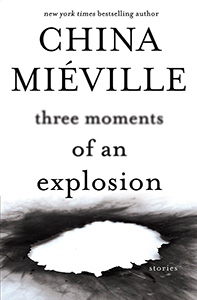 Three Moments of an Explosion by China Miéville
Three Moments of an Explosion by China Miéville
If you have read any of my books or have been following my blog for any length of time you’ll know that China Miéville is one of my most favorite authors of all time. (The Scar is easily in my top five.) So it’s no surprise that his latest collection of unpublished short stories appeared on my Kindle on launch day. (Which was yesterday.)
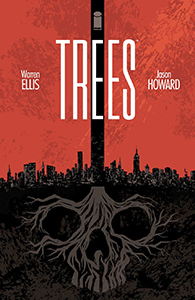 Trees Vol. 1 by Warren Ellis & Jason Howard
Trees Vol. 1 by Warren Ellis & Jason Howard
I have been intrigued by Trees ever since I saw some of Jason Howard’s early art so I was excited to find out that the first trade was available. Set in a world ten years after a strange alien race (that loom large like trees) have landed. The story explores the lives of several characters scattered around the globe as they discover what these strange and silent visitors are all about. The concept sounded fresh and I’ve always been a fan of Ellis’ writing so I’m on board and excited to dive in.
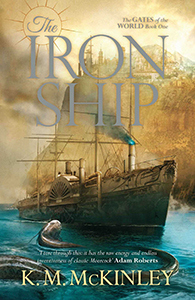 The Iron Ship by K. M. McKinley
The Iron Ship by K. M. McKinley
I’ve been seeing buzz about this for a while now and the reviews were looking pretty awesome. A new epic fantasy centered around a shop forhed of metal and magic? Adventure? Travel? Sign me up! Also, we K. M.s have to stick together. It’s contractual.
I’m always on the hunt for new books. If you have a book recommendation for me please leave a comment! Don’t want to leave a comment? Shoot me an email: hello@kmalexander.com and let me know what you think I should add to my stack.
Filed under: Bookquisitions, Reading Tagged: books, China Miéville, jason howard, k. m. mckinley, warren ellis








July 31, 2015
Friday Link Pack 7/31/2015
After a week hiatus, we’re back! Here is today’s Friday Link Pack! Some of these links I mention on Twitter, if you’re not already following me there, please do! Do you have a link I should feature in the upcoming link pack? Click here to email me and let me know! (Include a website so I can link to you as well.) Let’s get to it…
WRITING:
How To Deal With Harsh Criticism Of Your Writing
A great article from Charlie Jane Anders popped up on io9 this week. Criticism is hard, sometimes painfully so, but there are ways you can approach it. This is good advice.
Wake-Up Call: Amazon Serves Author Interests Better Than Publishers
Industry vet, Mike Shatzkin, breaks down Amazons recent innovative moves (like launching the follow button for readers) and how their success has translated into success for publishing and writing in general.
Ursula K. Le Guin Is Breathing Fire To Save American Literature
A great profile on badass Ursula K. Le Guin. (If you’re a follower of my blog it’s no secret how much I love her and her work.) Absolutely fantastic read, delving into her writing, her defense of sci-fi and fantasy (and books in general), and her activism work.
Why Horror Is Good For You (And Even Better For Your Kids)
Artist Greg Ruth gives us six fantastic reasons why we should all read horror.
Indie Or Traditional: The Cost Of Publishing
Creating a book always has a cost. It’s up to you as the writer to decide what that cost should be and how much you’re willing to pay.
ART:
Alicia Savage, Destinations
Stumbled across Alicia Savage’s ethereal photography work and knew I’d need to share it here. Obscured women float and drift through surreal glimpses of shattered Americana.
The Art Of Greg Ruth
He’s already told us why horror is good for us in the Writing section. Why not enjoy exploring some of his incredible work as well?
Artist Sam Van Aken’s Tree Grows 40 Different Kinds Of Fruit
Using grafting, Sam Van Aken grows some pretty incredible trees. [Big thanks to Ben for sharing this with me.]
RANDOM:
Perfectly Timed Photos That Make Dogs Look Like Giants
Because you needed something like this right now.
Abandoned Indonesian Church Shaped Like a Massive Clucking Chicken
Some people do strange things to get messages from God, things like build a strangely shaped church in the middle of the jungle. Apparently the builder had intended it to look like a dove but it’s clearly a chicken.
Kowloon Walled City
I have mentioned before that Lovat, the megalopolis central in my Bell Forging Cycle, was heavily influenced by Kowloon Walled City. This multimedia project by the Wall Street Journal is an incredible way to explore the rich stories and dark streets of the legendary Hong Kong settlement.
A Renaissance Painting Reveals How Breeding Changed Watermelons
We’re in the throws of summer here in the Northern Hemisphere. Why not take some time to explore the horticultural history of one of summer’s greatest treats: the watermelon.
WEIRD WIKIPEDIA:
“Seattle! Seattle! Death Rattle, Death Rattle; Tacoma! Tacoma! Aroma, Aroma!”
“The “Aroma of Tacoma” is a putrid and unpleasant odor associated with Tacoma, Washington. The smell has been described as similar to the odor of rotten eggs. The odor is not noticeable throughout the city, but is rather concentrated in the north end of Tacoma and is frequently smelled by motorists traveling that section of the Interstate 5 highway.”
H.P. LOVECRAFT STORY OF THE WEEK:
The Night Ocean
This gloomy mood piece follows a melancholy artist who spends time alone in his cabin by the sea, and unlike most of Lovecraft’s protagonists he doesn’t throw himself into the way of terrifying monstrosities.
GIF OF THE WEEK:

Filed under: Link Pack Tagged: abandoned places, alicia savage, amazon, criticism, dogs, greg ruth, Horror, indie publishing, Kowloon Walled City, sam van aken, Traditional Publishing, ursula k. le guin, watermelon








July 30, 2015
Follow Me On Amazon
Amazon recently rolled out a new tool allowing readers to be notified when their favorite authors release new books. I happen to be one of them. I wanted to make a quick post inviting you, as my readers, to follow me on Amazon. Just click this link and then click the follow button, it’s that simple! (Leaving a review for my books wouldn’t hurt either.)

Once again, I do want to thank all my readers out there. I really do appreciate your support, I couldn’t do this without you. I’m really happy to know so many folks out there enjoy my books. Y’all are amazing.
Filed under: News Tagged: amazon, follow, new books, writing








July 28, 2015
Indie Or Traditional: The Cost Of Publishing
I’ve been going down the road of licensing the rights to print the lyrics to an old Louis Armstrong song from the 1920s. It’s an interesting set of hurdles, and if you ever want to use lyrics in your book I recommend starting with Helen Sedwick’s article How To Use Lyrics Without Paying A Fortune Or A Lawyer over on The Book Designer. Like most things in indie publishing, this will probably cost some money. That’s okay. That’s a part of indie publishing. It’s what I signed on for when I decided to publish my books this way.
I’ve noticed a theme in a lot of writing advice blogs. There seems to be some weird desire to encourage people to go into indie publishing with the assumption that there isn’t any overhead and that indie publishing is essentially cost-free. A vocal part of the community likes to rally behind the idea. I hate it when I see this. Not only is it an outright lie, it does a disservice to the whole idea of indie publishing. When an unfinished, poorly edited, or badly designed book goes to print it affects everyone. The lack of quality control is cited all the time as a major reason why so many readers are very hesitant to read indie titles.
 Men with printing press, circa 1930
Men with printing press, circa 1930Doing It Right™ cost money. There is overhead in everything. When you become an indie writer you become a small business. You can’t do it alone. You need to hire an editor, you need to hire a designer, you need to hire an artist. You’re going to pay for ISBNs. You’re going to pay for marketing. You’re going to pay for print copies. Often, the publishing advice you read online skips over these details. But if you want to make a quality product (and you do) then you have to come to grips with the reality that it’ll cost money.
Traditional publishing does provide a way out. It doesn’t require much in the way out of pocket costs. But instead of money it takes a lot of your time and hard work. You need to write queries, polish synopsis, meet and greet with agents, and submit over and over and over again, and then weather the storm of rejections. It’s hard, but it’s (mostly) free.
 Hoe’s six-cylinder rotary press from the 1860s
Hoe’s six-cylinder rotary press from the 1860sThe choice for any writer is to decide which path they are interested in. Both provide ways to share your story with the world, but both are hard work and require different types of out of pocket expenses. It’s up to you to decide which path is right for you. For The Bell Forging Cycle, I chose to go the indie route. For me, it was a matter of control. I didn’t want to surrender the control of the cover design and interior layout to someone else. I have a very specific vision for my series from cover to cover and I wanted to see that through to the end.
So, what if you’re not willing to deal with traditional publishers (and there’s a whole slew of reasons why you’d want to go your own route) but the thought of putting down money is terrifying or out of the question? What options do you have? Why not consider one of the following:
Kickstarter
Crowd funding through Kickstarter is a great option. There’re a lot of writers who have had great success kickstarting their project. If you have a decent social media presence this isn’t a bad way to go. In a lot of ways, you can use this to pre-sell your book, and pay for the necessaries, without a lot of out of pocket expenses. Make sure when you put together your Kickstarter pitch you put as much effort into the pitch as you do your book. People want to see you as excited and engaged as you want them to be, a good presentation is important to that end.
Partnerships
This is another option. Instead of paying people up front, why not offer to split the profits with other professionals. So editors could get a percentage of your sales, as would the designers, and artists, and so on. This is a bit more difficult to manage as it requires a lot of transparency and trust, but it’s a good way to have everyone profit from a good book. You essentially build a team of people who want to see a successful book and the more folks you have to help you market your work the better.
Crowdsource
I tend to shy away from crowdsourcing professionally, as it is essentially spec. work for no pay. (See No!Spec for why this is troublesome.) However, I feel like I’d be remiss not mentioning it here as there are a lot of authors who have found success thanks to crowdsourcing platforms like Wattpad, Worthy of Publishing, and Figment. It tends to be a long road, but if you’re willing to put yourself out there and allow a community to give you feedback as you write it’s a good way to work without a lot of out of pocket expense.
Indie or traditional, the choice ultimately is yours. Decide how you best want to represent your manuscript. Know the choices you have and be willing to understand and accept the costs be they financial, chronometric, or both. In the end, I encourage you to focus on quality. Quality matters and your readers will thank you.
Filed under: publishing Tagged: cover design, crowdsourcing, editing, figment, indie publishing, Kickstarter, money, the bell forging cycle, Traditional Publishing, wattpad, worth of publishing, writer.ly, writing








July 24, 2015
Make Yourself Available
“Even if what you’re working on doesn’t go anywhere, it will help you with the next thing you’re doing. Make yourself available for something to happen. Give it a shot.”
Sadly, life conspired against me this week and there will be no Friday Link Pack for today. Sorry about that folks. We should be back next week. In the meantime enjoy this quote and if you’re really jonesing for some links check out some of the previous Link Packs.
Filed under: Quotes Tagged: advice, cormac mccarthy, encouragement, work








July 22, 2015
Visual Inspiration: Yuri Shwedoff
It’s been too long since I’ve done a visual inspiration post on here, so let’s fix that. I’ve long been a fan of the stunning atmospheric work of Russian artist Yuri Shwedoff, but when a friend of mine mentioned him today, I figured it’d be the perfect time to share his work with you. (So, you can all thank Chris.)
There is something very evocative about Shwedoff’s work and it’s more than his incredible compositions. Each piece tells a story and leaves the viewer hungering for more. That’s why I find it so inspiring. You can hear the howl of the wind moan across vast expanses. You’re there as his figures stare at immense landscapes of ancient monoliths. You can feel the energy present as an unlikely warrior steels herself for the coming of a terrible monster. It’s incredible work.
 Dragons by Yuri Shwedoff
Dragons by Yuri Shwedoff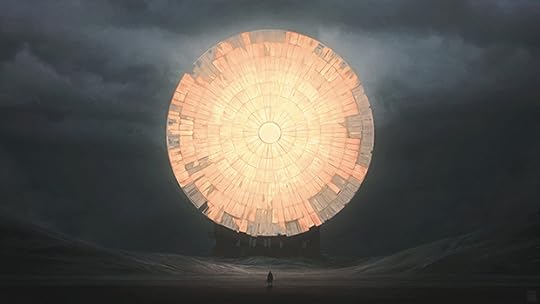 The Sun by Yuri Shwedoff
The Sun by Yuri Shwedoff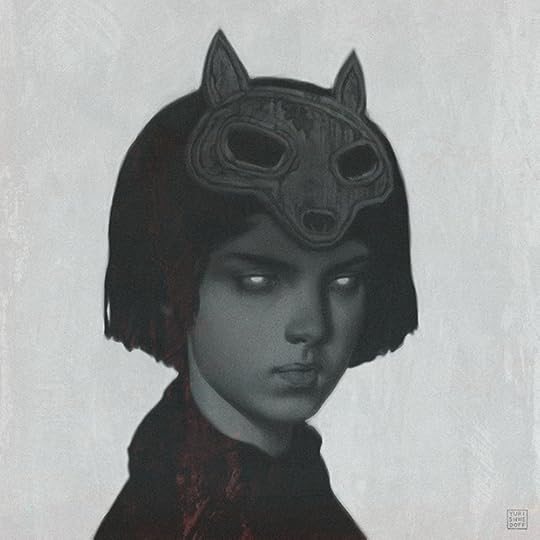 Werewolf by Yuri Shwedoff
Werewolf by Yuri Shwedoff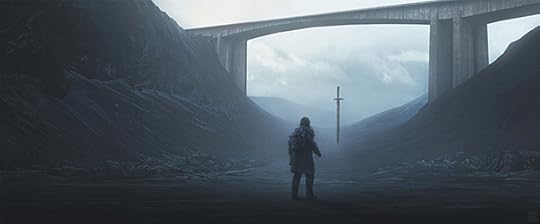 Excalibur by Yuri Shwedoff (Also, featured at the top of this post._
Excalibur by Yuri Shwedoff (Also, featured at the top of this post._Shwedoff is active all over the internet and I highly recommend following him. Start by checking him out on Twitter and Instagram. You can buy your favorite piece from his shop on Society6 and you can also support his work via Paetron and get exclusive HD images, process videos, and PSDs. If you want to see more of his work check it out at Behance or at Art Station. There are a lot of great pieces, it’s hard to pick a favorite. If I had to decide I’d probably settle on Dragons (featured above). There’s a lot going in that single image and clearly more to the story. Which of Yuri Shwedoff’s work is your favorite?
Filed under: Art, Inspiration Tagged: Concept Art, digital art, Illustration, yuri shwedoff








July 18, 2015
Another Finished Manuscript
Big news today! I just finished the rough draft for my new fantasy project: Our Dust Echoes! Whew. Finishing something like this is a weird mix of emotions. I’m glad to have reached this point, but it’s always hard to feel finished. But it is finished. The tale is told. As I mentioned on Instagram, Twitter, and pretty much everywhere else I had intended that this would be a series of small novellas… the, er… story grew in the telling.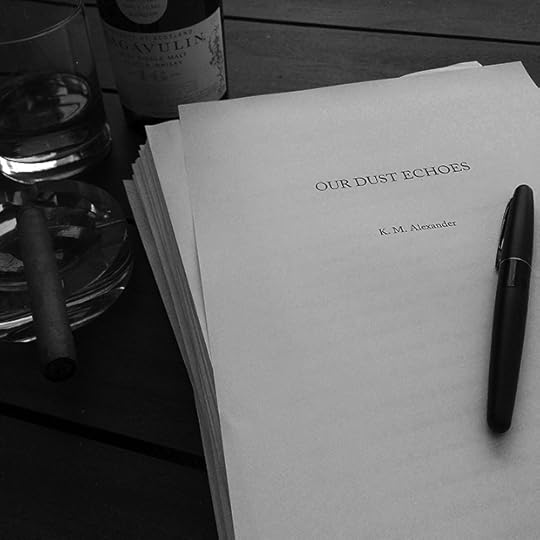 I’m going to let it rest for a bit, then I will be diving into my first pass of edits. Expect a lot more to come on this particular project, an official announcement will be really soon. Dust is very different from The Bell Forging Cycle in a lot of interesting ways. I think you’ll dig it.
I’m going to let it rest for a bit, then I will be diving into my first pass of edits. Expect a lot more to come on this particular project, an official announcement will be really soon. Dust is very different from The Bell Forging Cycle in a lot of interesting ways. I think you’ll dig it.
Filed under: O.D.E. Tagged: fantasy, manuscript, rough draft, writing








July 17, 2015
Friday Link Pack 07/17/2015
Here is today’s Friday Link Pack! Some of these links I mention on Twitter, if you’re not already following me there, please do! Do you have a link I should feature in the upcoming link pack? Click here to email me and let me know! (Include a website so I can link to you as well.) Let’s get to it…
WRITING:
Shorter
Fantastic article from Cory Doctorow on learning that brevity is often the right solution for any project. He’s right, and it’s good advice to take to heart. It’s something I am still learning myself. Thank God for good editors. [Thanks to Steve for sending this my way.]
Time Management Is Only Making Our Busy Lives Worse
I’m including this in the writing section for a few reasons: first, I see a lot of articles regarding time management and writing, and second: I think it’s good to step back and consider our craft the way we’d consider any other task. Don’t let time management get in the way of your creativity.
10 Key Questions That Can Determine Your Success As A Writer
Great list from best-selling author Jonathan Gunson reminding us what it takes to succeed at writing. Fantastic advice. Give yourself the time to go through these and answer honestly.
Three Quotes On Villains
What makes a villain engaging? What is a villain anyway? I assembled three quotes from three great creators that challenge the notion of what a villain should be.
ART:
Spooky Glass Bottles Inspired By H.P. Lovecraft
Italian artist Andrea Falaschi has created a series of insanity-inducing bottles for your favorite concoction. Fantastic detail. I love how unique each one is and how weathered they look. [Thanks to Scot for sending this to me.]
The Gore and Agony Of New Baroque Sculptures At The Met
Absolutely stunning 17th century sculptures by Pedro de Mena. The level of detail in this work is astounding.
Viral Series by Jess Riva Cooper
I guess this weeks theme is sculpture. I stumbled across these ceramic busts and was struck by the craftsmanship and how they danced on that fine edge between beautiful and disturbing. Fantastic work.
The Sandy Beach Architecture of Calvin Seibert
I fell in love with these temporary sand projects. Incredible work. Part of me is disappointed they were reclaimed by the sea, but that is also what makes their existence so wonderful.
RANDOM:
Japan’s New Satellite Captures an Image of Earth Every 10 Minutes
I just… I can’t… how stunning is this? (Very.)
The Atlantic Slave Trade in Two Minutes
Sometimes it’s hard to realize the scale of an event in history until it is presented in a way that changes your perception. This quick animation from Slate does a good job in putting a number of lives affect during the slave trade into perspective.
The Death Of The Hippies
Photographer Joe Samberg looks back on the era of the hippies and his time on Telegraph Ave. for The Atlantic, recalling how drug addiction eventually destroyed the scene. (A cropped version of one of Joe’s photos serves as the lead for today’s link pack.)
WEIRD WIKIPEDIA:
Hotel Toilet Paper Folding
“Hotel toilet paper folding is a common practice performed by hotels worldwide as a way of assuring guests that the bathroom has been cleaned.[1] Elaborate folding is sometimes used to impress or delight guests with the management’s creativity and attention to detail.
The common fold normally involves creating a triangle or “V” shape out of the first sheet or square on a toilet paper roll. Commonly, the two corners of the final sheet are tucked behind the paper symmetrically, forming a point at the end of the roll. More elaborate folding results in shapes like fans, sailboats, and even flowers.” Continue Reading →
H.P. LOVECRAFT STORY OF THE WEEK:
Fungi from Yuggoth
This poem, comprised of 36 sonnets, has long been a connection point between Lovecraft’s other work. Innsmouth is mentioned as well as Nyarlathotep and Azathoth, and we get more backstory for The Dunwich Horror and even Brown Jenkins from The Dreams in the Witch House makes an appearance.
GIF OF THE WEEK:
Filed under: Link Pack Tagged: andrea falaschi, calvin seibert, Earth, h.p. lovecraft, hippies, jess riva cooper, pedro de mena, sculpture, slave trade, Success, time management, villains, writing








July 15, 2015
The Beauty In The Standalone
I watched Whiplash the other day and I absolutely loved it. In my opinion, it should have won best picture. Miles Teller and J. K. Simmons are fantastic and Damien Chazelle’s storytelling is superb. In many ways, it’s a fantastic example of the perfect story. It didn’t have thirty minutes of slow character introduction and back story like so many of the superhero movies leading the box office these days. It didn’t have a long drawn out ending that wrapped everything up in a nice little package. It was succinct. It was sharp. It was alive. It left a lot to the imagination. It was beautiful.
Whiplash is a great example for what I am about to dive into. You see, several times at recent conventions, during discussions of favorite books, I have had people tell me that they only read books in a series. That is unfortunate. There are a lot of great books out there, and many of them are standalone novels. But I’ve heard this sentiment many times, and I think this kind of thinking tends to prevail within the speculative fiction market. Many novels get thrust into a series when they would have been better off remaining a single work. Sci-fi and fantasy publishers tend to be looks for writers who want to work on a series, especially in the YA market. Take a look at this list of the purported “Top 25 Fantasy Novels” only three are stand alone books (Erin Morgenstern’s The Night Circus, Robert Jackson Bennet’s City Of Stairs, and Susanna Clarke’s Jonathan Strange and Mr. Norrell.)
Some of this is a reaction to the marketplace. Publishers want to sell a bunch of books and people clearly love supporting a series. They love the long story. They enjoy following characters from one book to the next. The odds are high that someone who loves the first book will come back to the second. As a reader, author, and a publisher, I completely understand. Don’t get me wrong, I’m not against the series as a concept. I love reading them. Hell, I’m writing one. But, I think as fans of speculative fiction we need to be willing to embrace the standalone novel as quickly as we embrace the series. Not every sci-fi and fantasy story should be three, six, or twelve novels long to catch our interest. Like Whiplash we should have vibrant stories that are told in one succinct volume. We should allow for stories that leave us wondering and send our imagination spinning. We should be eager to support those books as quickly as we support a series. Think back to some of the classics speculative fiction authors: Isaac Asimov, Octavia Butler, Philip K. Dick, and the likes of Alfred Bester. Some of their best work was standalone novels. There’s a beauty in the standalone. And as fans of sci-fi and fantasy, it’s important to remember that.
How about you? What is your favorite standalone sci-fi or fantasy novel? Why not leave a reply and let us know in the comments!
Filed under: publishing, writing Tagged: fantasy, Novels, Sci-fi, series, standalone, whiplash








July 12, 2015
Three Quotes On Villains
“Nobody is a villain in their own story. We’re all the heroes of our own stories.”
“Life is not simple, and people can’t be boxed into being either heroes or villains.”
“The more successful the villain, the more successful the picture.”
I’ve been thinking a lot about the concept of the villain, and how often the books I love best don’t delineate between a hero and villain. Both sides of every conflict believe themselves to be in the right. After all, as GRRM says above, antagonists in any conflict usually label themselves the protagonist. I’ve become more intrigued by that gray spaces between black and white. The gray feels more real, and in the complexity it introduces, more human.
Filed under: Quotes Tagged: hero, humanity, villain, writing












